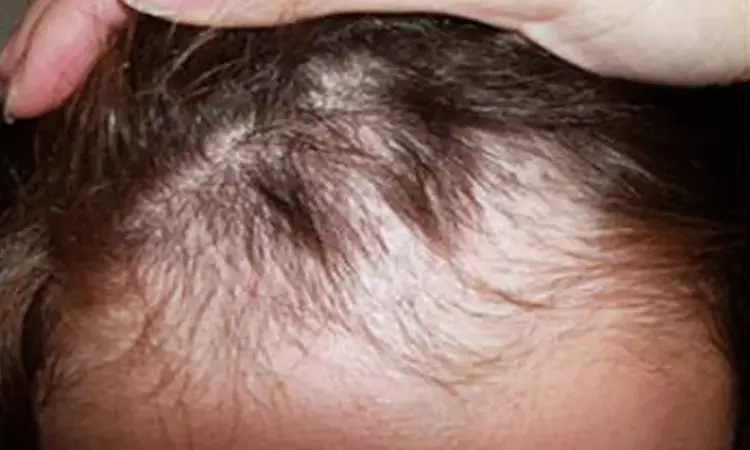- Home
- Medical news & Guidelines
- Anesthesiology
- Cardiology and CTVS
- Critical Care
- Dentistry
- Dermatology
- Diabetes and Endocrinology
- ENT
- Gastroenterology
- Medicine
- Nephrology
- Neurology
- Obstretics-Gynaecology
- Oncology
- Ophthalmology
- Orthopaedics
- Pediatrics-Neonatology
- Psychiatry
- Pulmonology
- Radiology
- Surgery
- Urology
- Laboratory Medicine
- Diet
- Nursing
- Paramedical
- Physiotherapy
- Health news
- Fact Check
- Bone Health Fact Check
- Brain Health Fact Check
- Cancer Related Fact Check
- Child Care Fact Check
- Dental and oral health fact check
- Diabetes and metabolic health fact check
- Diet and Nutrition Fact Check
- Eye and ENT Care Fact Check
- Fitness fact check
- Gut health fact check
- Heart health fact check
- Kidney health fact check
- Medical education fact check
- Men's health fact check
- Respiratory fact check
- Skin and hair care fact check
- Vaccine and Immunization fact check
- Women's health fact check
- AYUSH
- State News
- Andaman and Nicobar Islands
- Andhra Pradesh
- Arunachal Pradesh
- Assam
- Bihar
- Chandigarh
- Chattisgarh
- Dadra and Nagar Haveli
- Daman and Diu
- Delhi
- Goa
- Gujarat
- Haryana
- Himachal Pradesh
- Jammu & Kashmir
- Jharkhand
- Karnataka
- Kerala
- Ladakh
- Lakshadweep
- Madhya Pradesh
- Maharashtra
- Manipur
- Meghalaya
- Mizoram
- Nagaland
- Odisha
- Puducherry
- Punjab
- Rajasthan
- Sikkim
- Tamil Nadu
- Telangana
- Tripura
- Uttar Pradesh
- Uttrakhand
- West Bengal
- Medical Education
- Industry
Oral minoxidil effective for treating hair loss in children and adolescents: Study

Spain: Low-dose oral minoxidil is effective for the treatment of alopecia in children and adolescents, concludes research published in the Journal of the American Academy of Dermatology. Larger prospective studies are, however, warranted.
Hair plays a crucial part in sensory function, provides thermal and physical insulation, and confers sociocultural characteristics in humans. Hair production comprises a cycle consisting of growth, shedding, and replacement. In this cycle, about 50–100 hair are lost per day as a part of the normal physiological balance. However, unwanted hair loss (termed alopecia) is a clinical condition that develops when degenerative processes outpace hair regeneration. There is a wide spectrum of types and etiologies of alopecia, including alopecia areata, androgenetic alopecia (AGA), scarring alopecia, and telogen effluvium types.
Previous studies have described the use of topical minoxidil for treating hair disorders in children. Its adherence is limited by difficulties in its application and local irritant dermatitis despite its safety.
Against the above background, Belen de Nicolas-Ruanes, Dermatology Department, Trichology Unit, Ramon y Cajal University Hospital, Madrid, Spain, and colleagues aimed to describe the use of low-dose oral minoxidil (LDOM) for the treatment of hair disorders in a pediatric population in order to widen therapeutic options in this age group.
For this purpose, the researchers conducted a retrospective study of 45 pediatric patients (aged 10 to 17 years) with androgenetic alopecia (N = 39) and telogen effluvium (N = 6) treated with oral minoxidil. Dosing started at 0.5 mg and was increased to a mean dose of 1.24 mg.
The study revealed the following findings:
- All patients improved or had hair loss stabilization, 80%, and 20%, respectively.
- Oral minoxidil was used as monotherapy in 31% of patients. The mean minoxidil dose was 0.63 mg in girls and 2.35 mg in boys.
- The most common adverse effect was facial hypertrichosis (18%).
- Hypotension occurred in 1 patient without more details given, but all adverse events were considered mild.
The authors concluded, "oral minoxidil appears to be effective in treating alopecia in children and adolescents. Results of a larger controlled trial would possibly persuade the use of this systemic therapy in pediatric patients."
Reference:
The study titled, "Low-dose oral minoxidil for treatment of androgenetic alopecia and telogen effluvium in a pediatric population: A descriptive study," appears in the Journal of the American Academy of Dermatology.
Dr Kamal Kant Kohli-MBBS, DTCD- a chest specialist with more than 30 years of practice and a flair for writing clinical articles, Dr Kamal Kant Kohli joined Medical Dialogues as a Chief Editor of Medical News. Besides writing articles, as an editor, he proofreads and verifies all the medical content published on Medical Dialogues including those coming from journals, studies,medical conferences,guidelines etc. Email: drkohli@medicaldialogues.in. Contact no. 011-43720751


